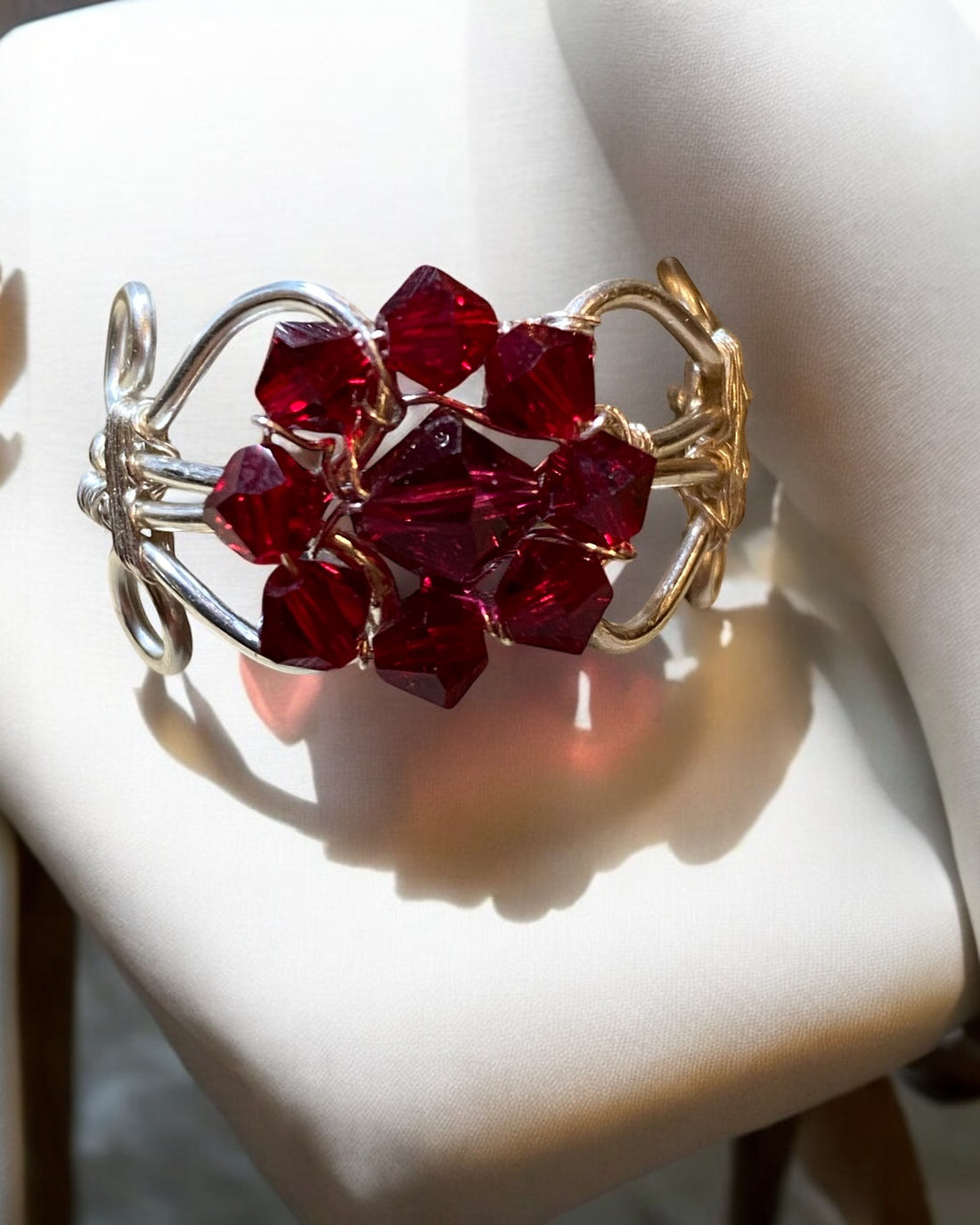
Garnet
Share
The deep, glossy red color of garnet resembles the juicy seeds of a pomegranate, which is perhaps why its name is derived from the Latin word granatum, meaning pomegranate seed. In Greek mythology, a pomegranate was often given as a gift of passion and associated with eternal love. In ancient history, travelers wore garnet gemstones because they were believed to light up the night and provide protection from nightmares and accidents.
Garnets were used in burial jewelry and carved signet rings to proclaim royalty during the Bronze Age (300 BC). Garnets were one of the most popular gemstones of the Vikings and Anglo-Saxons, as revealed in the stunning jewelry and sword fittings in the Staffordshire Hoard, because they believed the blood-red stone improved their fighting prowess.
In the middle ages, garnet was commonly believed to guard against poison. Royals would often drop a garnet gemstone into a glass of wine to ensure they were not poisoned to death. Garnets were also worn by the crusaders as an aid to safely find their way home. Eastern European folktales speak of garnets being worn around the neck to guard against night-wandering vampires. And in Victorian times, the gem was used in engagement rings and other women's jewelry, to mark fidelity in love.
Non gem-grade garnets are frequently used in sandpaper and other grinding and polishing materials.